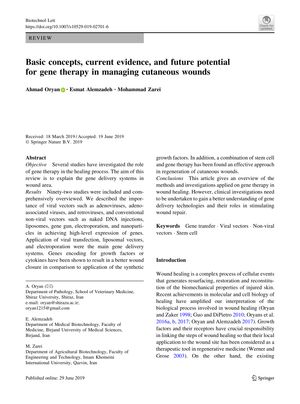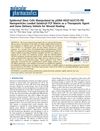Basic Concepts, Current Evidence, And Future Potential For Gene Therapy In Managing Cutaneous Wounds
June 2019
in “
Biotechnology Letters
”
gene therapy cutaneous wounds viral vectors non-viral vectors adenoviruses adeno-associated viruses retroviruses naked DNA injections liposomes gene gun electroporation nanoparticles growth factors cytokines stem cell therapy siRNA delivery hepatocyte growth factor HGF wound healing AAV naked DNA siRNA

TLDR Gene therapy shows promise for improving wound healing, but more research is needed for human use.
The review article from 2019 analyzed 92 studies on gene therapy for wound healing, emphasizing the effectiveness of gene delivery systems, including both viral and non-viral vectors. Viral vectors such as adenoviruses, adeno-associated viruses, and retroviruses, and non-viral methods like naked DNA injections, liposomes, gene gun, electroporation, and nanoparticles were discussed for their ability to induce high-level gene expression. The review found that genes encoding growth factors or cytokines improved wound closure more effectively than synthetic growth factors and that combining stem cell and gene therapy was beneficial for cutaneous wound regeneration. Non-viral vectors were particularly noted for their safety and targeted delivery potential, with liposomes being effective in siRNA delivery and nanoparticles showing promise for controlled release and targeting. Electroporation, especially with hepatocyte growth factor (HGF), enhanced wound repair and reduced necrosis. The document concluded that while gene therapy has been effective in promoting tissue repair in animal models, more clinical research is needed to refine these techniques for human applications.

